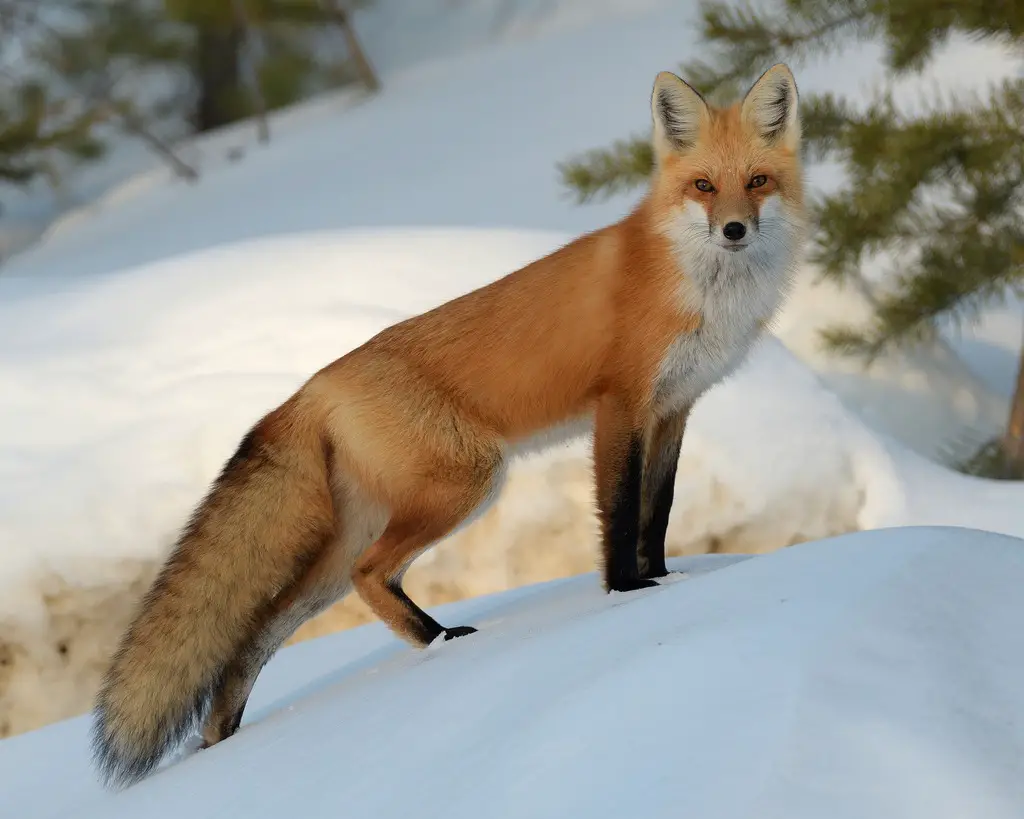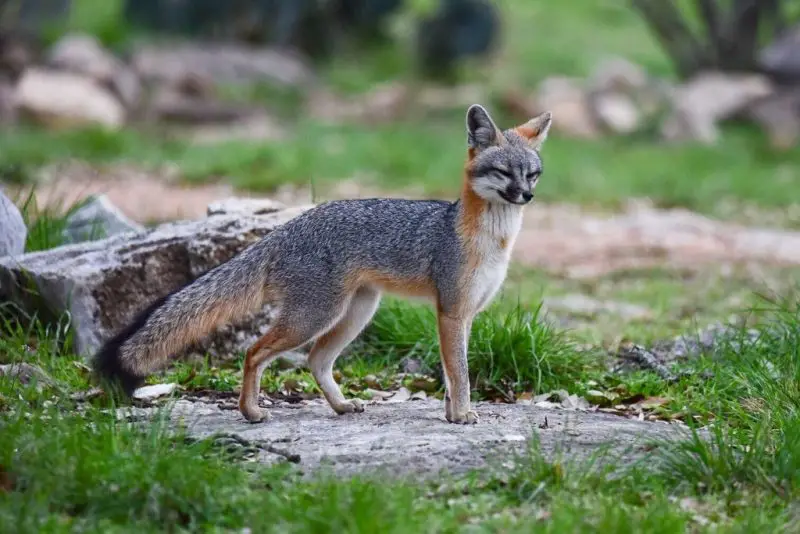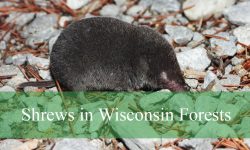Minnesota is home to a diverse range of wildlife, and among its most fascinating residents are the foxes. Foxes in Minnesota are a common sight for nature enthusiasts and wildlife watchers alike. Their adaptability allows them to thrive in various habitats, from dense forests to suburban neighborhoods.
This article focuses on the two main types of foxes in Minnesota: the Red Fox and the Gray Fox. Both species have unique characteristics and behaviors that make them interesting to study and observe. By understanding their appearances and habits, you can better identify these elusive animals in the wild.
Foxes in Minnesota play an important role in the local ecosystem, helping control populations of small mammals and insects. Exploring rural landscapes or city outskirts, learning about these foxes enriches outdoor experiences and deepens the connection to nature.
Common Foxes in Minnesota
Red Fox (Vulpes vulpes)

The Red Fox is the most widespread and easily recognized fox species in Minnesota. It typically measures 18 to 35 inches in body length, with an additional 12 to 16 inches of bushy tail, and weighs between 8 to 15 pounds. Its coat is a vibrant reddish-orange color, with white fur on the throat, chest, and underbelly. Distinctive black markings often appear on the legs and behind the ears. The Red Fox’s sharp muzzle, pointed ears, and bushy tail with a white tip make it unmistakable in the wild. Its fur changes slightly with the seasons, becoming thicker and more plush in winter to insulate against cold temperatures.
Red Foxes are highly adaptable animals with diverse behaviors. They are primarily nocturnal but can be active at any time of day, especially during dawn and dusk. Their diet is omnivorous and opportunistic, feeding on small mammals like rabbits and rodents, birds, insects, fruits, and even human refuse in suburban areas. Red Foxes are skilled hunters, using a unique “mousing” behavior where they leap high into the air and pounce to catch prey hidden under snow or vegetation. They are territorial, marking their ranges with scent glands and vocalizations, but their territories can overlap when food is abundant.
In Minnesota, Red Foxes thrive in a wide variety of habitats, demonstrating remarkable flexibility. They are found in forests, farmland, grasslands, and increasingly in suburban and urban environments where food sources are plentiful. Their ability to adapt to different landscapes has allowed them to maintain stable populations despite habitat changes. They build dens in hollow logs, brush piles, or abandoned burrows, often lining them with leaves and grass to raise their kits safely.
Red Foxes are distributed throughout Minnesota, from the southern agricultural regions to northern forests and wetlands. They are common in areas such as the Twin Cities metro area, the St. Croix River Valley, and the wooded regions of the northern part of the state. Their presence is well documented across all seasons, although they may be less visible in winter due to their secretive habits and deep snow cover.
Gray Fox (Urocyon cinereoargenteus)

The Gray Fox is a medium-sized canid native to Minnesota, usually smaller and stockier than the Red Fox. Adult Gray Foxes typically range from 18 to 24 inches in body length with a tail length of about 10 to 15 inches, weighing 7 to 13 pounds. Their coat is primarily salt-and-pepper gray mixed with black hairs along the back and sides, contrasted by reddish fur on the neck, ears, legs, and sides of the face. The tail is bushy with a distinctive black stripe running along the top and ending with a black tip. Their rounded ears and shorter muzzle distinguish them from the Red Fox, while their strong limbs allow them to climb trees with ease.
Behaviorally, the Gray Fox is more secretive and primarily nocturnal, preferring dense wooded habitats where it can hide and hunt under cover. Unlike most other canids, the Gray Fox is an excellent climber and uses this ability to evade predators and search for food in trees. Its diet is omnivorous, including small mammals, birds, insects, fruits, and eggs. It often forages on the forest floor but will climb to obtain bird eggs or fruit. The Gray Fox is generally solitary or lives in small family groups, using scent marking and vocalizations to communicate and defend territory.
The preferred habitat for Gray Foxes in Minnesota is deciduous and mixed forests with dense understory vegetation. They favor areas that provide ample cover such as river bottoms, brushy woodlands, and forest edges near fields. Unlike Red Foxes, Gray Foxes tend to avoid urban areas and open farmland, making them less commonly observed by people. They den in hollow trees, rock crevices, or abandoned burrows, and may use tree cavities for resting during the day.
Gray Foxes are primarily found in southeastern and southern Minnesota, where forested landscapes are more common. They are less widespread than Red Foxes but maintain stable populations in appropriate habitats, including the Mississippi River corridor and the bluffs along the Minnesota River. Their elusive nature and preference for dense forest make them harder to spot, but their distinctive vocalizations and tracks can reveal their presence to knowledgeable observers.
Differences Between Red Fox and Gray Fox
Key Identification Points
The Red Fox and Gray Fox are two distinct species that can be differentiated by several physical characteristics. The Red Fox typically has a vibrant reddish-orange coat with a white underbelly and black markings on its legs and behind the ears. Its tail is bushy with a white tip, which is one of its most recognizable features. In contrast, the Gray Fox sports a grizzled gray coat mixed with black hairs, accented by reddish patches on its neck, ears, and legs. Its tail is also bushy but distinguished by a black stripe running along the top and a black tip. The Gray Fox has shorter, more rounded ears and a stouter body, while the Red Fox has a leaner build with more pointed ears.
Behavioral Contrasts
Behaviorally, the Red Fox is highly adaptable and often active both during the day and night, although it tends to be most active during dawn and dusk. It exhibits a range of hunting strategies including stalking and pouncing, and it often forages in open areas, including suburban environments. The Gray Fox, however, is more secretive and primarily nocturnal, preferring dense forests and brushy areas where it can remain concealed. A unique behavior of the Gray Fox is its ability to climb trees, which it uses to escape predators and to access food sources such as bird eggs and fruits — a trait almost unique among North American canids.
Habitat Preferences
In terms of habitat, the Red Fox is a habitat generalist and thrives in diverse environments ranging from forests and grasslands to agricultural fields and urban areas. This adaptability contributes to its widespread presence across Minnesota. The Gray Fox, however, favors densely vegetated woodlands with plenty of cover, such as deciduous or mixed forests and brushy river valleys. It tends to avoid heavily developed or open farmland areas, making it less commonly seen by people compared to the Red Fox.
Tips for Spotting Foxes in Minnesota
Best Locations and Seasons
To observe foxes in Minnesota, the best locations include forest edges, wetlands, river corridors, and suburban areas where green spaces are preserved. For Red Foxes, suburban parks and farmland edges are promising spots due to their adaptability to human environments. Gray Foxes are more likely to be spotted in thick woodlands and areas with dense understory vegetation, such as parts of southeastern Minnesota’s forested regions.
The most favorable seasons for fox sightings are spring and fall. During spring, foxes are more active because of mating and raising young, making them easier to spot. Fall is another good time since foxes are hunting vigorously to build fat reserves for winter. Early mornings and late evenings, particularly during the cooler parts of the day, are ideal times to observe these animals.
How to Observe Safely and Respectfully
When observing foxes, maintaining a respectful distance is crucial to avoid disturbing their natural behavior. Using binoculars or a camera with a zoom lens allows you to watch without approaching. Keep noise to a minimum, stay downwind if possible, and avoid making sudden movements. Never attempt to feed or approach foxes, as habituating wildlife to humans can be harmful both to animals and people. Respect seasonal closures or protected areas, especially during denning season in spring, to ensure fox families are not disrupted.
Conclusion
Summary of Key Points
Minnesota is home to two fascinating fox species: the widely adaptable Red Fox and the more secretive Gray Fox. They differ in physical appearance, behavior, and preferred habitats. Understanding these differences enhances wildlife appreciation and helps in recognizing each species in the wild. Foxes play important ecological roles, controlling rodent populations and contributing to the balance of natural systems.
Encouragement for Wildlife Appreciation and Conservation
Observing foxes in their natural habitats offers a wonderful opportunity to connect with Minnesota’s rich biodiversity. By practicing responsible wildlife viewing and supporting habitat conservation efforts, we can ensure that these beautiful animals continue to thrive for generations to come. Whether you are a casual nature lover or an avid wildlife watcher, respecting foxes and their environment fosters a deeper appreciation for the natural world around us.






